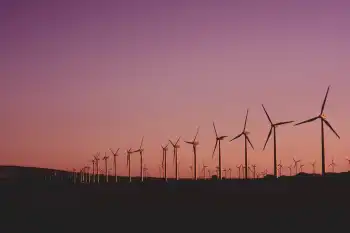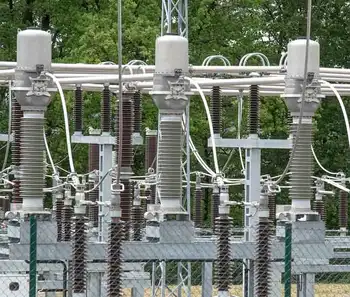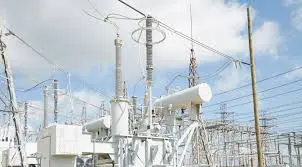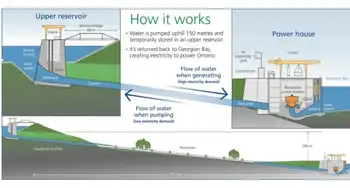Siemens to open wind operations center
By PR Newswire
Protective Relay Training - Basic
Our customized live online or in‑person group training can be delivered to your staff at your location.

- Live Online
- 12 hours Instructor-led
- Group Training Available
Construction of two facilities will begin this month, with an expected completion date by the end of this year. With a total of 64,000 square feet, the combined main component, tooling and spare parts facilities will be Siemens' largest wind power service distribution center to date in the U.S.
The geographic location of the primary distribution complex will provide customers with reduced delivery time and greater parts availability, and serve as a hub for wind energy main components and parts, including wind turbine blades, drive assemblies and generators. Over the next five years, the company expects to create up to 40 "green-collar" jobs at the facility.
"Oklahoma has demonstrated a growing commitment to renewable energy development and we are delighted to become resident members of the Woodward business community," said Tim Holt, Siemens' CEO for Renewables Service.
"The need for this large distribution facility clearly indicates the wind industry is maturing rapidly, creating new jobs and new development opportunities. Woodward's location in the central region of the U.S. gives us great access to our wind power customers in that area and allows us to address their distribution needs in a cost-effective and efficient timeframe. We would like to thank Governor Mary Fallin, the Oklahoma Department of Commerce, as well as one of our key customers, Oklahoma Gas & Electric, and the Woodward Industrial Foundation for their invaluable expertise, guidance and support during this process."
"Siemens Energy is an international leader in the wind industry and we are excited by this new opportunity in Woodward and partnership with OG&E. The opening of such a facility is a testimony to Oklahoma's combination of outstanding wind resources, business friendly environment, and skilled workforce and education programs," said Oklahoma Governor Mary Fallin.
"As governor, my number one priority is to bring more jobs and investment to the state of Oklahoma and renewable energy has tremendous potential as a source of economic growth in our state. The Siemens investment reinforces what we already know: Oklahoma is great place to do business."
LaVern W. Phillips, president of the Woodward Industrial Foundation, said, "The Foundation is extremely honored that Siemens Energy has selected Woodward as the site for its wind service distribution center. Not only is Siemens a world leader in wind energy, but it is one of the largest and most respected companies in the world. If you were to prepare a list of all the wind energy companies you would want to attract to your community, Siemens would be at the top of the list."
Siemens is actively involved in wind projects across Oklahoma. The company provided 44 SWT-2.3-93 wind turbines to Oklahoma Gas & Electric OG&E and the University of Oklahoma OU for the OU Spirit wind farm located near Woodward, Oklahoma, which was commissioned in 2010. With the new 101-MW wind farm, the University plans to use 100 renewable energy by 2013. Additionally, Siemens supplied 66 SWT-2.3-101 units to CPV Renewable Energy Company's 151.8-MW Keenan II wind farm located near Keenan, Oklahoma, in 2010 and 44 SWT-2.3-93 units for the 101-MW Keenan I wind farm in 2008. Siemens is also providing 95 SWT-2.3-101 wind turbines and three units of the SWT-3.0-101 direct drive wind turbines for OG&E's Crossroads wind farm, located in Dewey County, Oklahoma. Upon completion in the second half of 2011, the Crossroads wind power project will meet the electrical needs of more than 68,000 average U.S. homes.
In 2005, Siemens had only one employee working in the wind power in the U.S. sector. Today, that number has risen to over 1,500, including 450 service employees. Over the course of the next three years, Siemens' wind service is expected to increase to over 1,500 people, illustrating the dramatic and continuing growth of its wind power business. There are more than 4,600 Siemens wind turbines installed or on order in North America, thus creating a considerable base for the company's wind service investment.
Siemens has made significant strides to grow its presence in the wind energy industry in the U.S. and now enjoys a number two position in the market in terms of installed capacity. The Woodward center marks the ninth facility expansion related to Siemens' wind power business in the U.S. Others include the company's recently-opened new nacelle assembly plant in Hutchinson, Kansas, a wind turbine blade manufacturing facility in Fort Madison, Iowa, a service center in Houston, Texas, an R&D center in Boulder, Colorado, two gearbox factories in Elgin, Illinois, an offshore office in Boston, Massachusetts, and the company's Americas headquarters in Orlando, Florida. In the U.S., Siemens has installed wind turbines with a combined capacity of more than 4,200 MW in the U.S., which is enough to supply power to more than 1.25 million homes.











